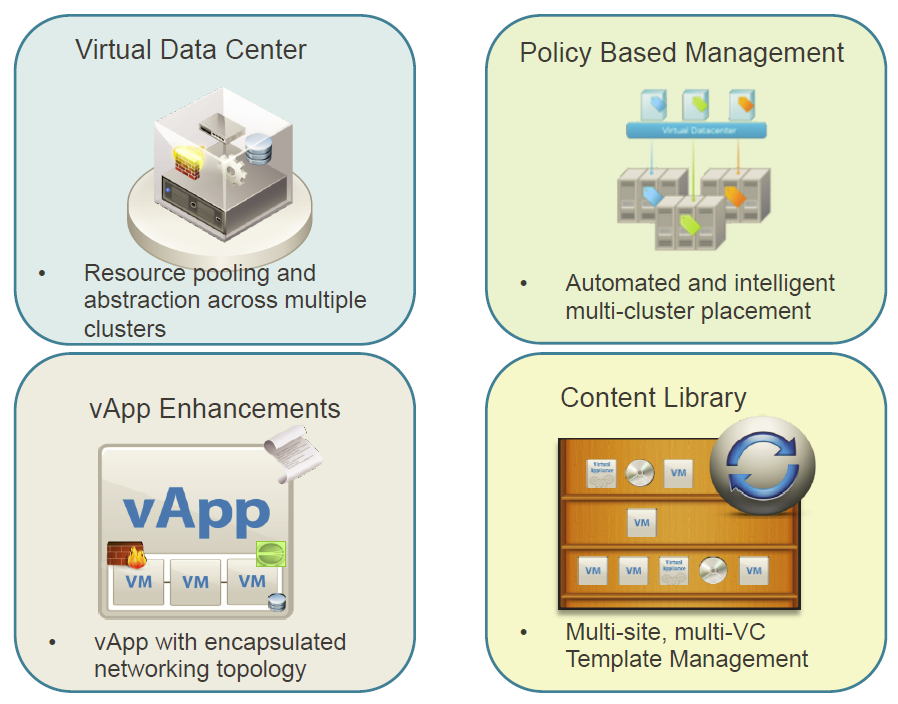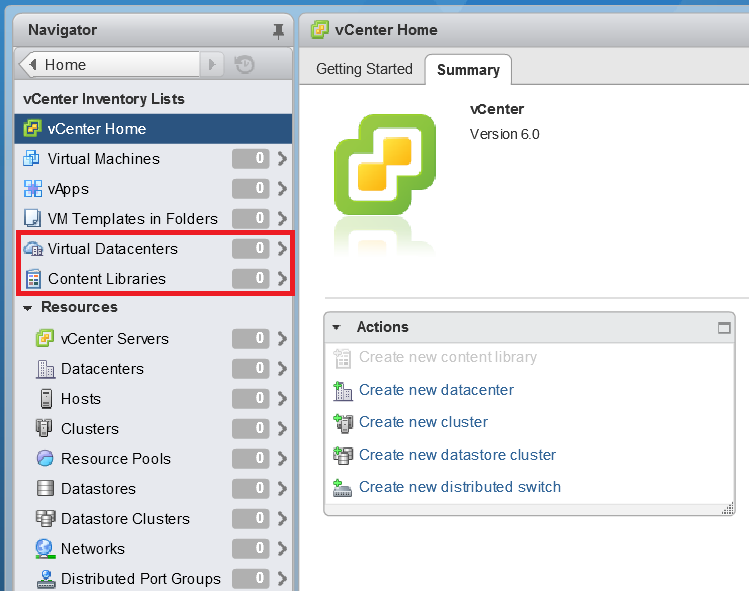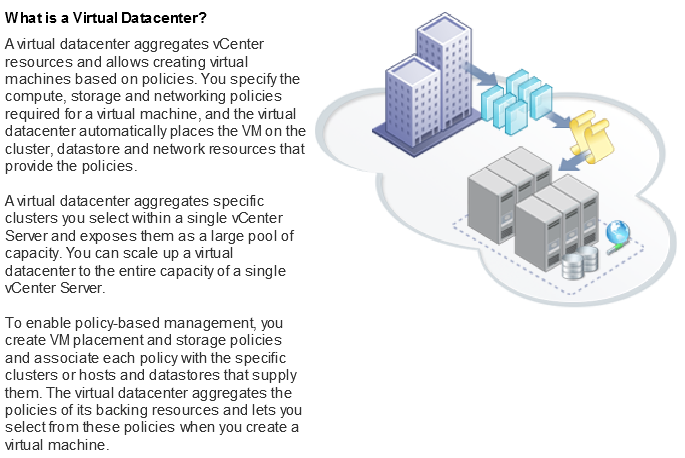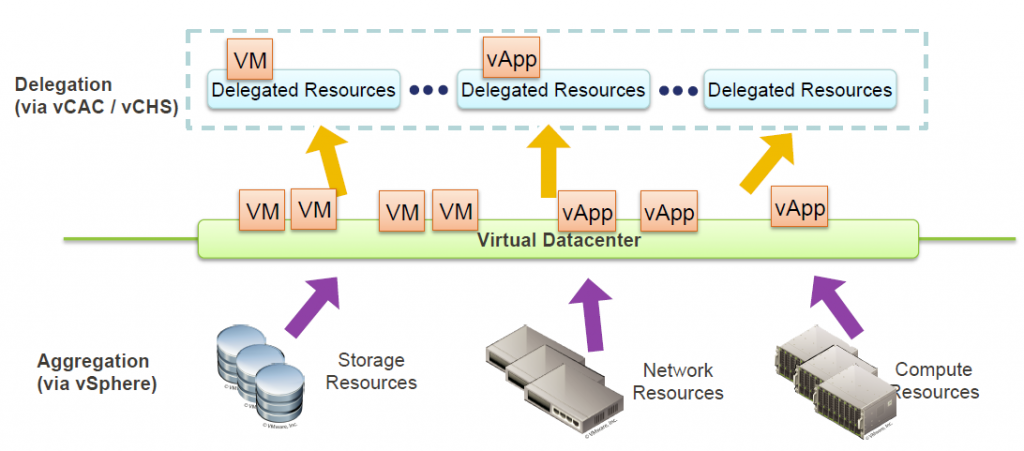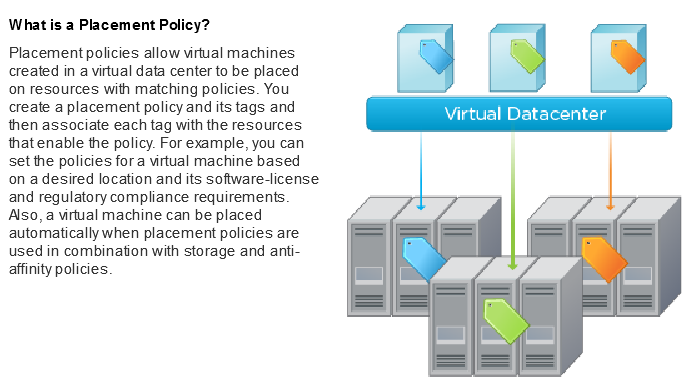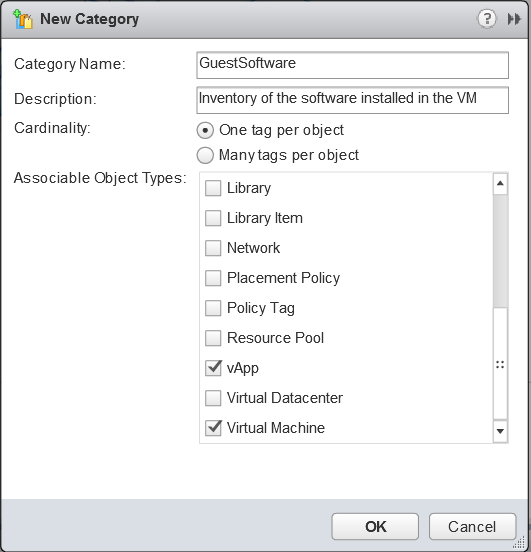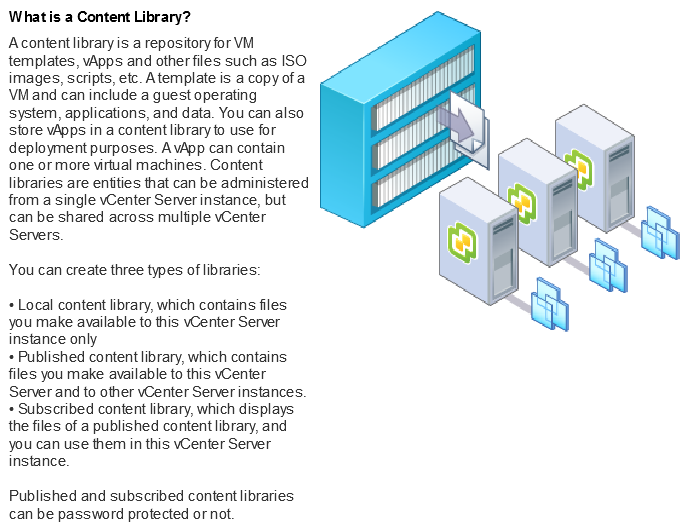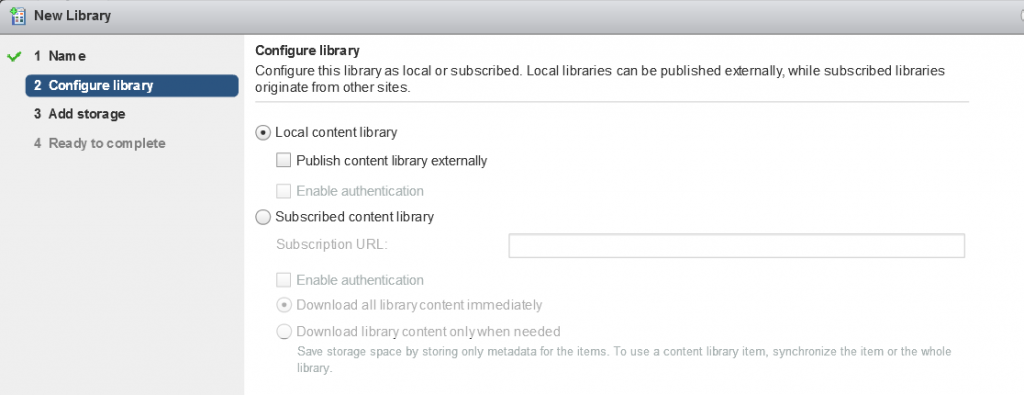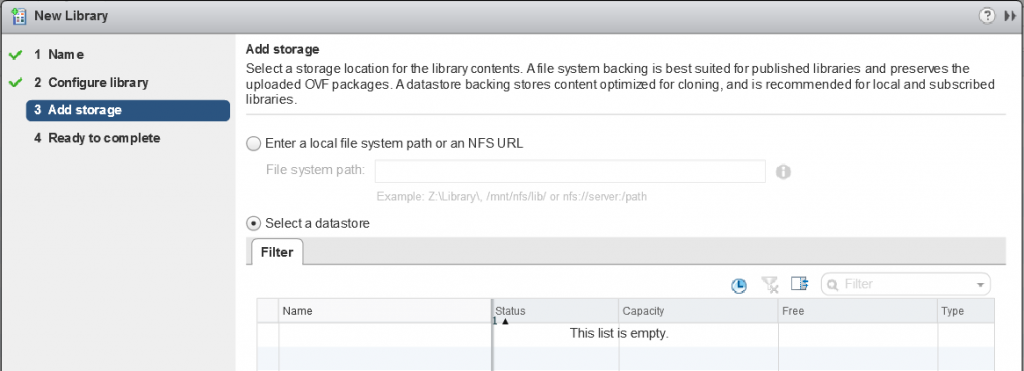This post is also available in: Italian
Reading Time: 8 minutesIn previous versions of vSphere, the vCenter Server was not suitable to provide directly cloud based functions: vCloud Director was the way to build a Software Defined DataCenter (SDDC) at the top of vSphere and provide more functions and concepts that were not available in vCenter. But, during the VMworld 2013, VMware introduced a new product strategy and direction for vCloud Director (vCD): VMware would like to move forward with a plan to converge vCD functionality into the vSphere and vCloud Automation Center (vCAC) product lines or (as another direction) in the virtualization platform (that means inside vCenter Server)
The new vCenter Server 6.0 goes in the second direction that does not exclude the first one (to be more precise, bring some functions in the lower level will help to add more at the top level with tools like vCAC).
In VMware vSphere 6.0 there are now some cloud oriented features integrated in the core features provided by vCenter Server:
- Virtual Datacenters: provides resource aggregation and policy-based placement intelligence, while servicing as a primary point of integration across the vCloud Suite. This concepts remain similar to the provided by vCloud Director.
- Policy Based Management: enables administrators to become more operationally efficient and automated in both the initial placement and ongoing maintenance of virtual machines with the visibility of the virtual datacenters.
- vApp Enhancements: vApps in vSphere 4.x and 5.x were only compute resources containers (with few other functions) and were not the same of vCloud Director’s vApps. Now vSphere vApp can encapsulate network topology and, probably in future releases, will become a container (not with the same meaning of Docker’s containers) of all VMs properties and resources.
- Multi‐Site Content Library: provides simple and effective management for VM templates, vApps, ISO images and scripts for vSphere Admins – collectively called “content” – that can be synchronized across sites and vCenter Servers.
Please note that Virtual Data Center (VDC) and Policy Based Management (PBM) will NOT be included in the vSphere 6.0 GA release.
This unless the code is not released you have to assume that those features will not be included and postponed to a new version or some update.
Virtual Datacenters and Content Libraries are also new objects directly listed in the top level vCenter inventory:
Of course there is also the integration with vCloud Air (formally vCloud Hybrid Service) using the vSphere Web Client Plug-in (you can download it automatically using an SSO admin account connected to the vSphere Web Client).
VMware vSphere Virtual Datacenter
The new vCenter object called Virtual Datacenter will provide resource aggregation and policy-based placement intelligence, while serving as a primary point-of integration
across the vCloud Suite.
The new VMware’s vision about providers and consumers in a Software Defined Datacenter is represented in this schema:
Virtual Datacenter aggregates software-defined resources into a larger pool of capacity that can scale on demand, resources can be added and removed. Resources are added in form of vSphere DRS clusters.
Virtual Datacenter can draw resources from anywhere: actually only multiple clusters within single vCenter, but in the future from multiple vCenters in a single site.
As you can notice a vSphere Virtual Datacenter is similar to a vCloud Director Provider Virtual Datacenter (PvDC): at the top of it you can simple use other tools, like vCAC to build something similar to organization vDCs, or simple use common resource management or vApp to provide resource internally (like in a private cloud).
Creating a new Virtual Datacenter is quite simple and the pre-requisites are similar the vCloud Director case:
- Cluster must have vSphere DRS in either semi-automatic or fully-automatic mode
- Standalone hosts cannot be added directly to virtual datacenter
To be honest in vCloud Director there where more requirements (like having vDS already configured, configure the vCloud Network and Security part, …), but also more capability, like adding only a resource pool and not the entire cluster (each vSphere cluster actually can be part only to one vSphere Virtual Datacenter).
To create a Virtual Datacenter in vCenter you have only to:
- Create a Virtual Datacenter
- Add cluster resources to Virtual Datacenter
In order to removing resources from a virtual datacenter:
- Removing host: with host maintenance mode, VMs stay in the VDC and will move to other hosts within the cluster
- Removing cluster: VMs stay on the cluster and will leave the VDC
- To keep VMs in the VDC, admins can manually vMotion VMs to other clusters within VDC, prior to cluster removal
VM Policy Based Management
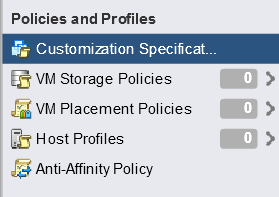 In the new vCenter Server there are several policies (following the approach of policy-driven used by other VMware’s products) and you can notice two new voices: VM Placement Policies and Anti-Affinity Policy.
In the new vCenter Server there are several policies (following the approach of policy-driven used by other VMware’s products) and you can notice two new voices: VM Placement Policies and Anti-Affinity Policy.
Both are child from the new policy-based automation (PBM) for VM workload placement than can provide:
- PBM – Tag-Based Policies (for example to check which host is licended)
- PBM – VM Anti-Affinity Policies
Let’s start from tag based placement policy. First what really is placement policy? It’s just a rule on how place a VM on the right resource.
VM Storage Profiles conceptually are just an example on a VM placement policy, but actually they still remain separated from this new type of policy (I suppose that it can become more general to be adopted instead of other type of VM policies, but let’s see in future versions).
A Tag-Based Policy is just a placement policy were the choices are done according with the defined tag. Tags are not new in the vSphere Web Client, because they exist also in version 5.1 and 5.5 and are just a generalization of the custom fields or comments in the VM properites… with the big difference that you can tag everything (not only VMs) and you can use multiple tag for each object.
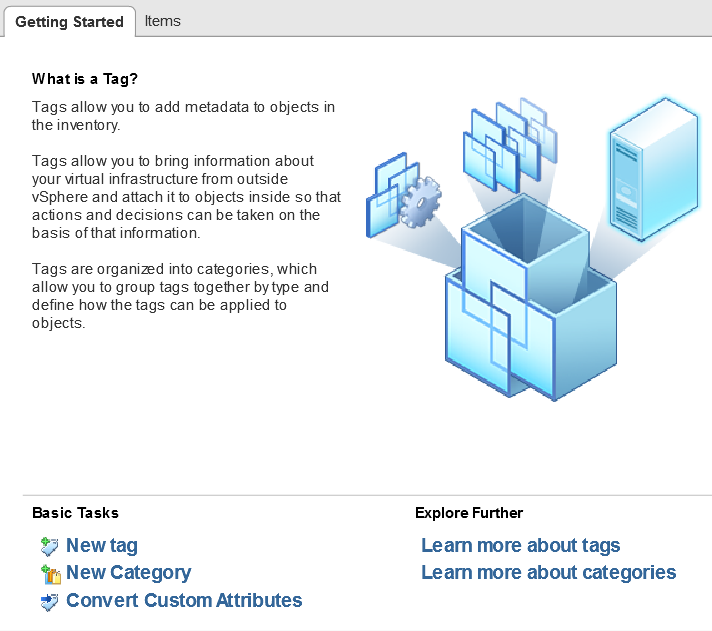 In vSphere 6.0 tags can be grouped in categories can can be assigned to all object types or only to specific object type (like VMs or vApp) and can have one single tag for each object or can have multiple tags for each object (for example if you want to keep a software inventory of your VMs could be reasonable use many tag, if you are only interested at the guest OS, then one tag could be enought).
In vSphere 6.0 tags can be grouped in categories can can be assigned to all object types or only to specific object type (like VMs or vApp) and can have one single tag for each object or can have multiple tags for each object (for example if you want to keep a software inventory of your VMs could be reasonable use many tag, if you are only interested at the guest OS, then one tag could be enought).
An Anti-Affinity policy become just like an anti-affinity rule in DRS or SDRS: you want to keep two VMs separated on two different virtual datacenter resources. For example to implement a geografic fault domain concept or just to avoid local failure (like a single rack failure and an entire datacenter was mappend on a rack).
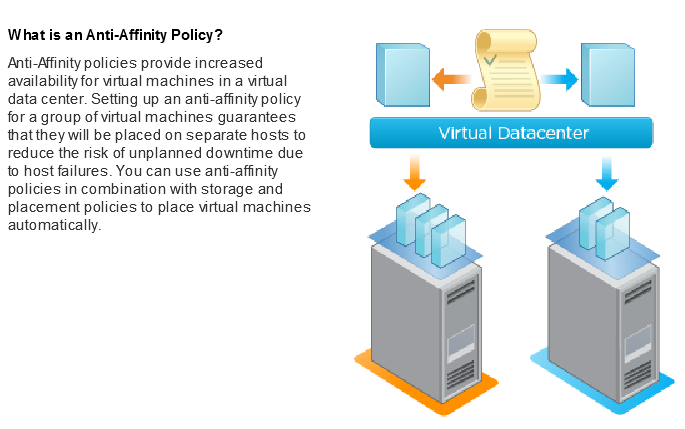 Actually remediation of those kind of policies are limited: there is the ability to execute manual remediation per VM (like was with first version of VM Storage Profile), but in future roadmap we can expect a fully automated remediation (if desidered).
Actually remediation of those kind of policies are limited: there is the ability to execute manual remediation per VM (like was with first version of VM Storage Profile), but in future roadmap we can expect a fully automated remediation (if desidered).
Content Library
The new vCenter’s Content Library provides simple and effective management for VM templates, vApps, ISO images and scripts for vSphereAdmins. It’s like the Catalog concept in vCloud Director, again with some limits and some difference.
The main features of Content Library are:
- Store and manage content: one central location to manage all content
- Enhance templates in vCenter folders: support for other file types
- Share content: store once, share many times
- Publish/Subscribe: like in the vCloud’s catalog
- Use content: deploy templates on to a host or a cluster or deploy into Virtual Data Center
Configure a new library is pretty easy and you can publish its content directly in the creation phase. Or you can choose to subscribe to an existing published library.
For a new library you can choose the storage using existing datastore or a local filesystem path or an NFS URL.
For more information see also: vSphere 6.0 blog – Multi Site Content Library.


